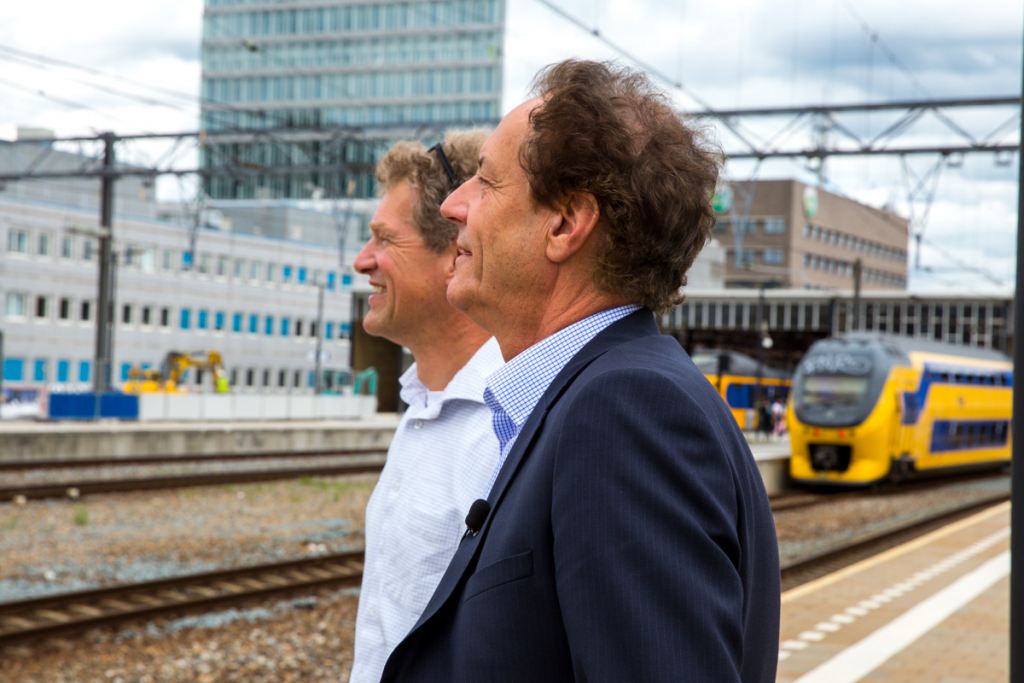
People often ask me what it takes to become the Smartest Region in the World. It may sound strange, but imagination might be more important than knowledge. If knowledge alone was enough to know the exact solution to a problem, then you would take care of it in one go, and the problem would be solved. That’s not how it works, of course. It’s always a matter of trying, trying again, and then trying some more. That’s what innovation is. You need space and freedom of thought, and you can’t be afraid of having different ideas, and accept that not everything will work the first time. Ninety per cent of medical research doesn’t produce the answer to the question you had hoped to find. So does this mean you failed? No, because now you can check off what didn’t work.
[learn_more caption=”Passport Rob van Gijzel”] Rob van Gijzel (Eindhoven, 1954) was a member of the Dutch Labour Party in the Lower House of Parliament from 1989 to 2001.
Between 2008 and 2016, Rob van Gijzel was the mayor of the city of his birth, Eindhoven. By virtue of this position, he was also the chairman of Brainport.
Together with Veldhoven and Helmond, Eindhoven was named the Smartest Region in the World in 2011, among other reasons, because “it serves as a shining example of cooperation and regional development (jury report, ICF)”. During this period, he and Hans Horsten wrote the book De stad die de toekomst maakt (The city that is designing the future).
Since 2013, Rob van Gijzel has been the chairman of the Intelligent Community Forum Foundation (ICF). This is the non-profit organization and worldwide network that awards the “Smartest Region in the World” designation (www.intelligentcommunity.org).
Chairman of Betonhuis, the umbrella organization for the cement and concrete industry.
He became the ambassador of the Dutch Blockchain Coalition in 2018, the purpose of which is to accelerate the introduction and applications of blockchain in the Netherlands. (www.dutchblockchaincoalition.org)[/learn_more]
When Eindhoven entered the contest for the title of Smartest Region in the World, everyone was talking about smart cities. And although this is certainly important, I prefer to talk about a smart society. The place it happens is naturally important, but it’s really about the community that’s active in that location, the people who are all doing this together. They are willing to continually adapt. Far too often, our processes are actually control processes which are described in annual plans in painstaking detail. Let that go! Give yourself more room!
In addition to smart, you also have to be strong.
Of course you have to be smart, but this is not enough. We may have had the highest patent density in Eindhoven at a certain point, but you also have to be able to do something with these patents. Start-ups have to get to it, start looking beyond the borders and bring in talent from abroad if necessary and support SMEs. In short, in addition to smart, you also have to be strong.
In crafting your international strategy, you have to consider that people look at certain things differently in some countries. We saw this when Eindhoven decided to make the shift from traditional manufacturing to the digital knowledge economy. Your goal has to be that the pupil actually becomes the improved version of the master. There are plenty of countries where this would be out of the question, nations where hierarchy is sacred. In spite of this, that engineer with all his theoretical knowledge and models has to be open to the practical advice from the higher-education techie. After all, all this theory has to be able to be put into practice. And this is a concept that can be far from being self-explanatory abroad.
What is being underestimated is the importance of the triple helix concept. This collaboration between business, knowledge education and government plays a defining role during the design and start-up phase of places like Brainport or Brightlands in Limburg. However, partners have to hang onto each other even after this run-up period. When Brainport in Eindhoven became so successful, the feeling developed that this triple helix idea wasn’t so necessary anymore. After all, Brainport was going gangbusters. The government thought the entrepreneurs would take over, and the entrepreneurs expected the government to continue to take care of the ecosystem. Tiny cracks developed. Fortunately, we recognized in time that a continued partnership in the triple helix was one of the key factors for success.
Another factor is that you have the time to stay the course you have agreed on. In the case of Eindhoven, we made clear agreements with the partners; everyone is able to see what we’re doing and of course, know everything, but we won’t settle up until the end of the agreed period, and not before.
Source: Brightlands

